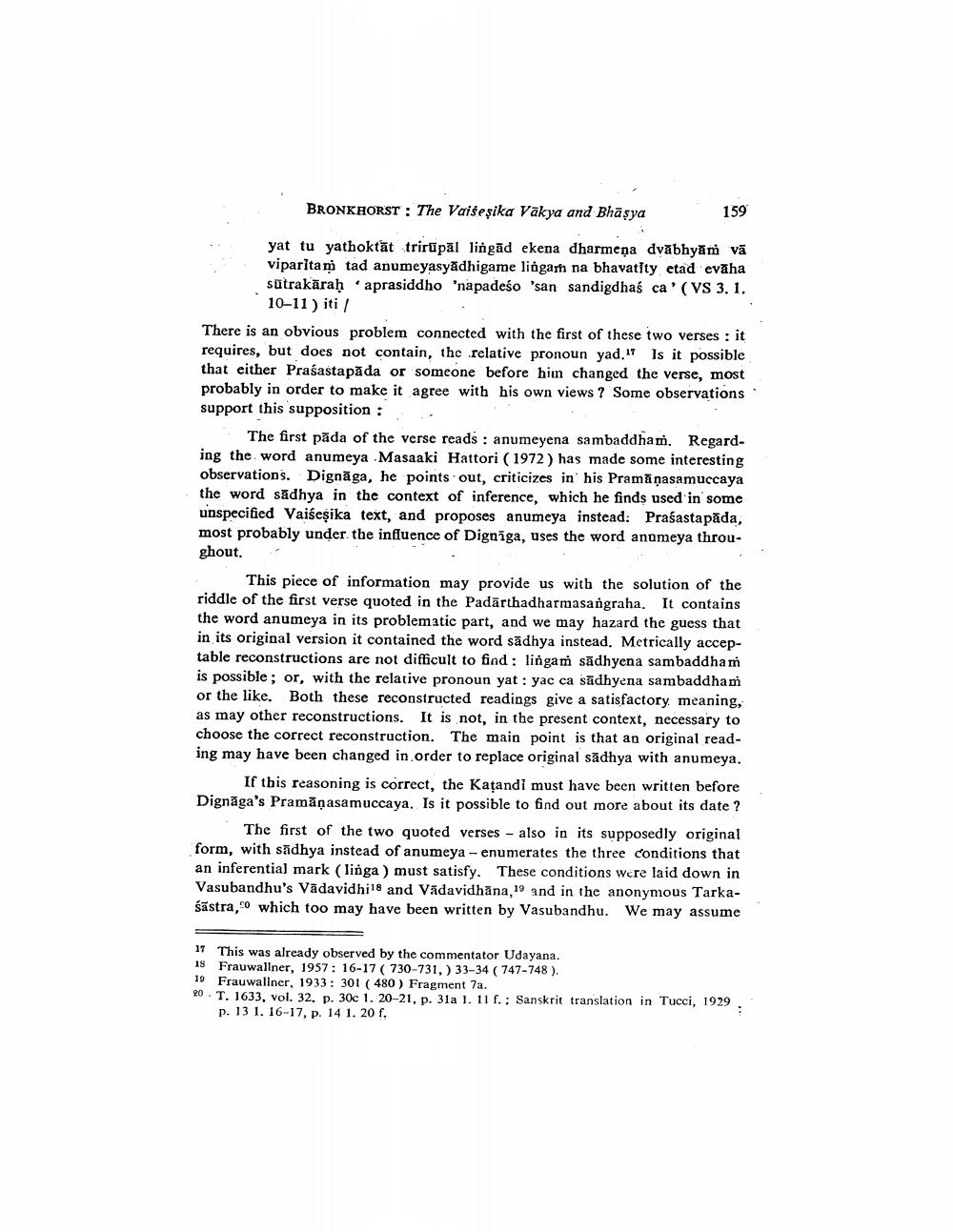________________
BRONKHORST : The Vaiseșika Vakya and Bhāşya
159
yat tu yathoktāt trirupāl lingād ekena dharmeņa dvăbhyam vā viparitam tad anumeyasyadhigame lingam na bhavatity etad evāha satrakārahaprasiddho 'napadeśo 'san sandigdhaś ca' (VS 3. 1.
10-11) iti There is an obvious problem connected with the first of these two verses : it requires, but does not contain, the relative pronoun yad.17 Is it possible that either Prasastapā da or someone before himn changed the verse, most probably in order to make it agree with his own views ? Some observations support this supposition: .
The first pāda of the verse reads : anumeyena sambaddham. Regarding the word anumeya Masaaki Hattori (1972) has made some interesting observations. Dignāga, he points out, criticizes in his Pramāṇasamuccaya the word sadhya in the context of inference, which he finds used in some unspecified Vaiśesika text, and proposes anumeya instead: Prasastapāda, most probably under the influence of Dignīga, uses the word anumeya throughout.
This piece of information may provide us with the solution of the riddle of the first verse quoted in the Padārthadharmasangraha. It contains the word anumeya in its problematic part, and we may hazard the guess that in its original version it contained the word sādhya instead. Metrically acceptable reconstructions are not difficult to find : lingam sādhyena sambaddham is possible; or, with the relative pronoun yat : yac ca sādhyena sambaddham or the like. Both these reconstructed readings give a satisfactory meaning, as may other reconstructions. It is not, in the present context, necessary to choose the correct reconstruction. The main point is that an original reading may have been changed in order to replace original sādhya with anumeya.
If this reasoning is correct, the katandi must have been written before Dignāga's Pramānasamuccaya. Is it possible to find out more about its date?
The first of the two quoted verses - also in its supposedly original form, with sādhya instead of anumeya - enumerates the three conditions that an inferential mark (linga ) must satisfy. These conditions were laid down in Vasubandhu's Vādavidhi18 and Vädavidhāna, 19 and in the anonymous TarkaŠāstra, which too may have been written by Vasubandhu. We may assume
11 This was already observed by the commentator Udayana. 18 Frauwallner, 1957: 16-17 ( 730-731, ) 33-34 ( 747-748). 19 Frauwallner, 1933: 301 ( 480 ) Fragment 7a. 20. T. 1633, vol. 32. p. 30c 1. 20-21, p. 31a 1. 11 f. : Sanskrit translation in Tucci, 1929
p. 131. 16-17, p. 14 1. 20 f.




